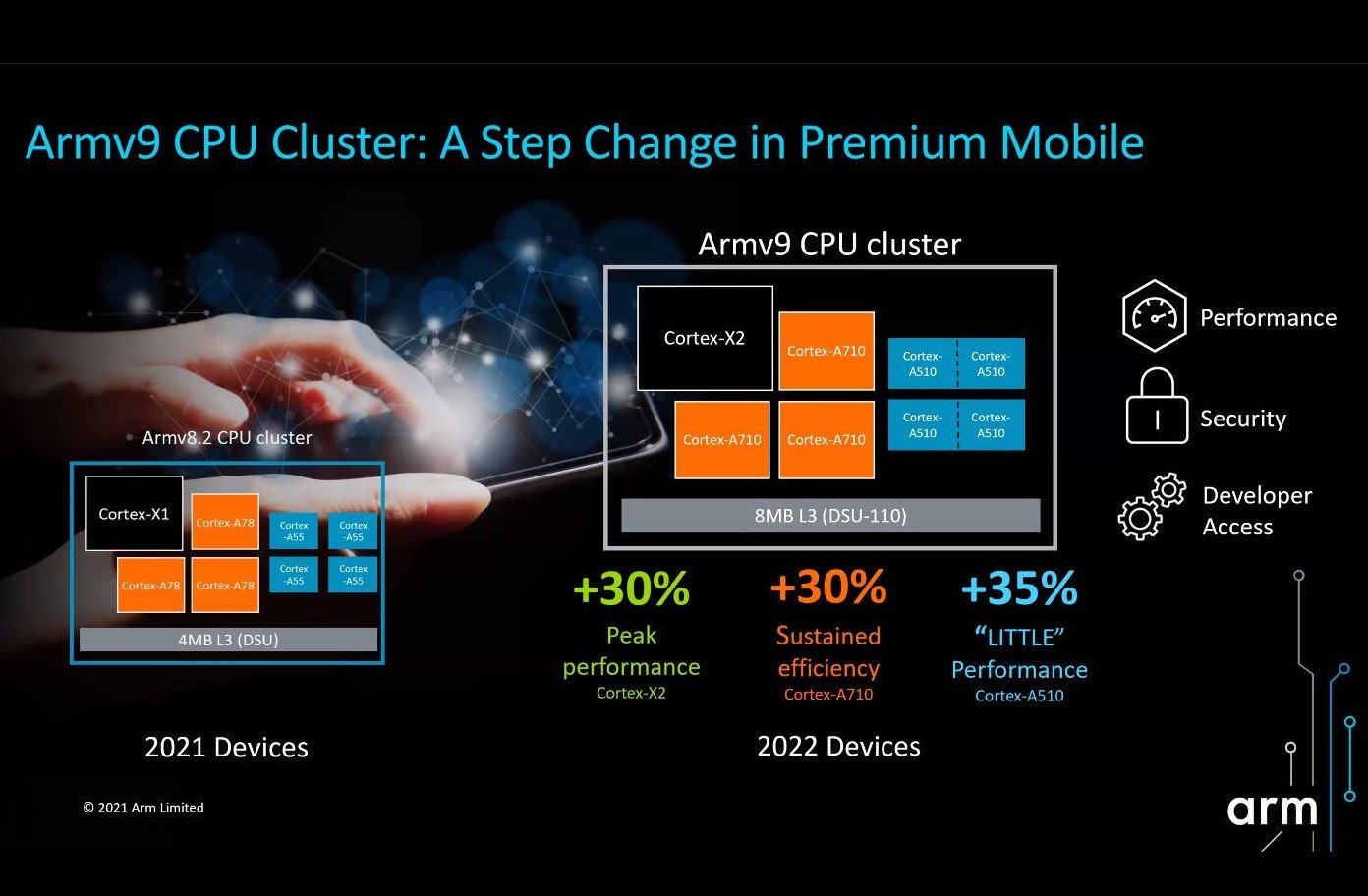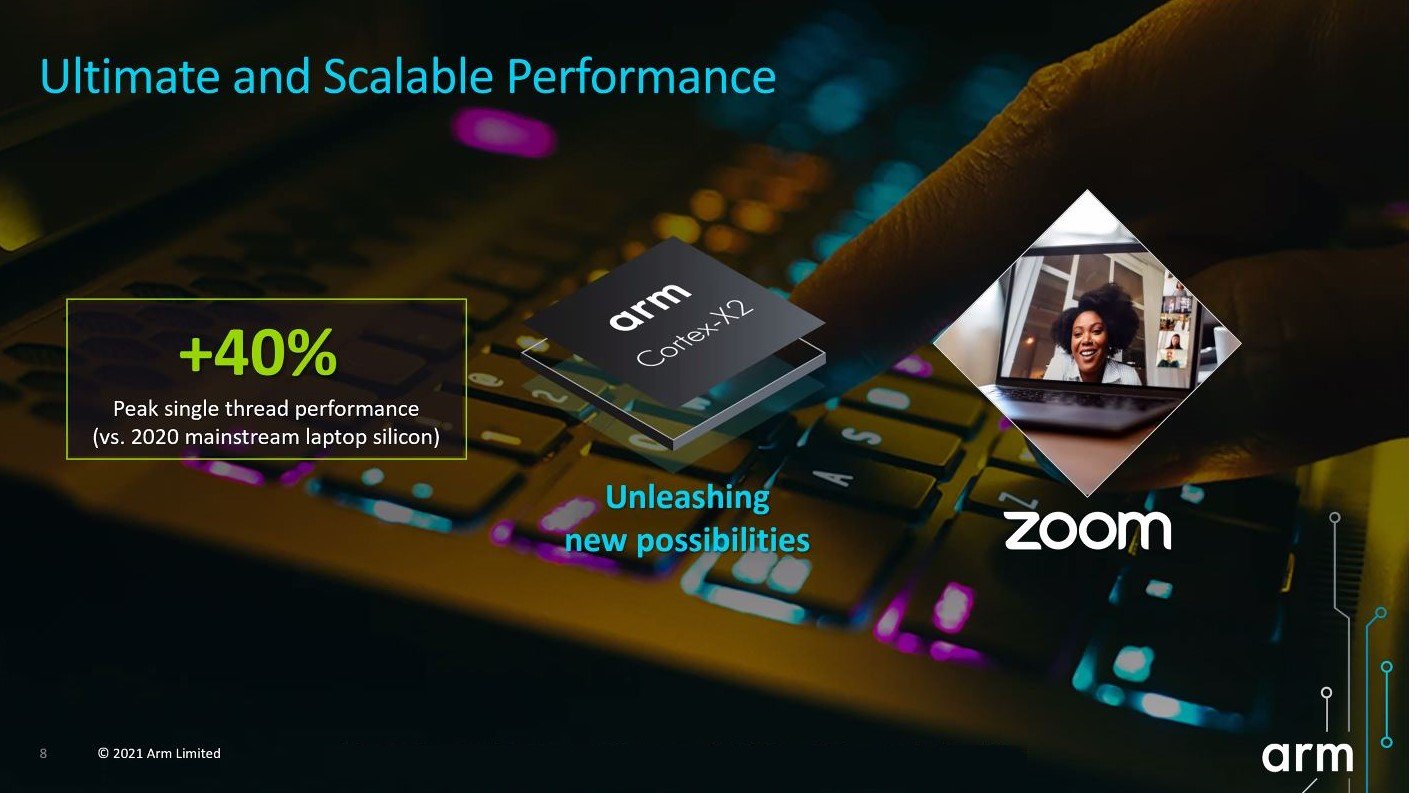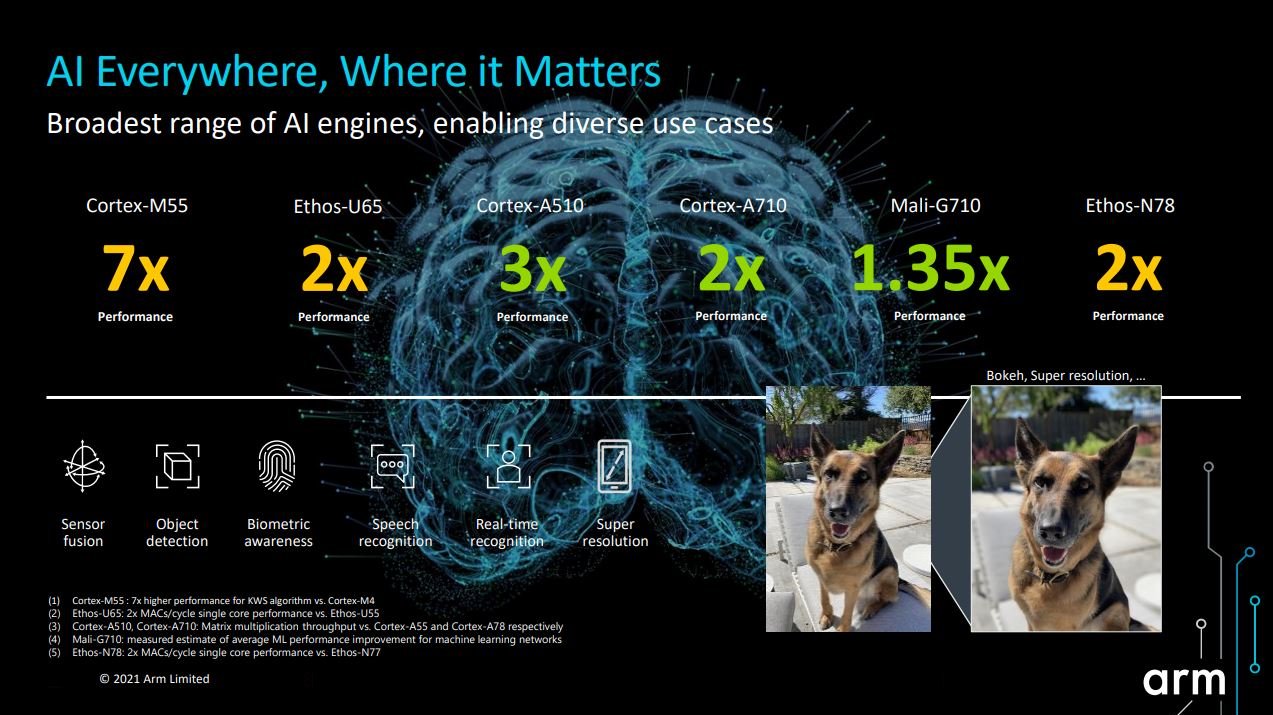Arm's new architecture will boost performance for both high-end and low-end products as well as bring security and scalability.
What you need to know
- The ARM v9 architecture for mobile includes the new Cortex-X2, Cortex-A710, and Cortex-A510 core design.
- The Mali G710 GPU offers better performance and Machine Learning capabilities while also being more efficient.
- AI performance has been boosted up to 700% across CPU, GPU, and co-processor cores.
Arm has announced the future of mobile CPU design with the unveiling of its v9 specification for mobile computing. We first learned of Arm's v9 platform in March 2021, where the focus was purely on the high-level architecture changes, but today's announcement focuses on the new design for the Arm platform specification. Arm doesn't sell mobile chips, but it produces and licenses the base design that every chip maker — including Qualcomm and Apple — use to build the chips that go inside the best Android phones we love so much.
The overall theme of the new architecture isn't surprising: better performance, better efficiency, better security, and better machine learning and AI performance. This is exactly what anyone would have expected to see and comes as no surprise.
Starting from the top, the new Cortex-X2 design builds off its predecessor to provide up to 40% better performance for mobile devices including Arm-based laptops. The Cortex-X1 design proved to be a success and Qualcomm used the design in its Snapdragon 888 to power many of the current flagship phones.
Next in line is the Cortex-A710 core design. It's the "big" part of a big-LITTLE SoC where more power-hungry high-performance cores are ready to take on the heavy lifting while less powerful, higher-efficiency cores tackle the day-to-day tasks of keeping everything running smoothly. Arm says the A710 is the first "big" CPU core balanced for both performance and efficiency and offers a 10% performance boost and 30% better energy efficiency compared to the previous Cortex-A78 design.
Arm promises just what we wanted: bigger, stronger, faster, and better battery life.
When it comes to the "little" side of the CPU, the new Cortex-A510 is a big upgrade, too. While the big-LITTLE configuration focuses on energy efficiency for the smaller cores, the A510 bests the Core-A55 that precedes it by 35%, along with 300% better Machine Learning capabilities. To top it off, it's also 20% more energy-efficient than the A55 we see in phones today. This is a huge deal as most day-to-day tasks like browsing and scrolling through social media are reliant on these cores.
Arm is also making changes to its DynamIQ shared unit with a 5x increase in cluster bandwidth. DynamIQ allows chip makers to roll out more flexible CPU designs with several disparate cores; for instance, the Snapdragon 888 has a single X1 core, three A78 derivatives, and four A55-based cores.
The new Mali GPU line offers performance gains for things like Vulkan support, Machine Learning, and texture improvements across the board, and even the entry-level Mali-G310 gets a big boost in all areas, including a whopping 450% increase in Vulkan performance. At the other end of the spectrum, the Mali-G710 GPU sports a 20% performance boost, is 20% more energy-efficient and gives Machine Learning capabilities a 35% uplift. ARM's v9 mobile architecture offers better GPUs all around.
To round things off, Arm also has included what it calls a "total compute solution" that incorporates CPU and GPU design with the CoreLink CI-700 and enterprise-grade Scalable Coherent Interface solution, and the CoreLink NI-700, which is a scalable and configurable network-on-chip design.
Together, these co-processors promise better security through MTE (memory tagging extension) hardware support, decreased latency for all applications and computing, and overall reduced power consumption. Arm says this total package will also support greatly enhanced AI capabilities for on-device computing for things like biometrics, speech recognition, super-resolution, and real-time facial recognition.
I spoke with AnandTech's Andrei Frumusanu, who has an excellent in-depth look at the technical details of the announcement, and his thoughts were positive but tempered:
On the CPU side, this generation has smaller performance and efficiency advancements, but generally, these are overshadowed by the major move towards Armv9 and the start of a new architectural baseline for the ecosystem. The performance jumps are smaller because of the new architectural features and because this is the 4th and last generation of the current Austin microarchitecture family, and we should expect more in the next iteration.
The GPU looks like a good upgrade, but generally, we should not expect any change in the competitive situation. Since HiSilicon is essentially dead and Samsung is going with AMD, it leaves only MediaTek as a customer — so essentially, Arm is out of the flagship SoC market in terms of GPU right now.
While it is great to be excited over any of these announcements, we have to remember that ARM doesn't sell any consumer products of its own. Arm Limited's Melissa Scruse and Paul Williamson made it clear that we should expect announcements from Arm's partners about how they intend to incorporate the new design specification.
Arm also told Android Central it'll continue working with partners throughout the full SoC design to make the chips in our devices even better. We saw how successful that can be with the Cortex-X1 powered Snapdragon 888 and are excited to hear the coming announcements from chipmakers.
2022 isn't going to be just more of the same, and things look exciting in the mobile space!



Tidak ada komentar:
Posting Komentar